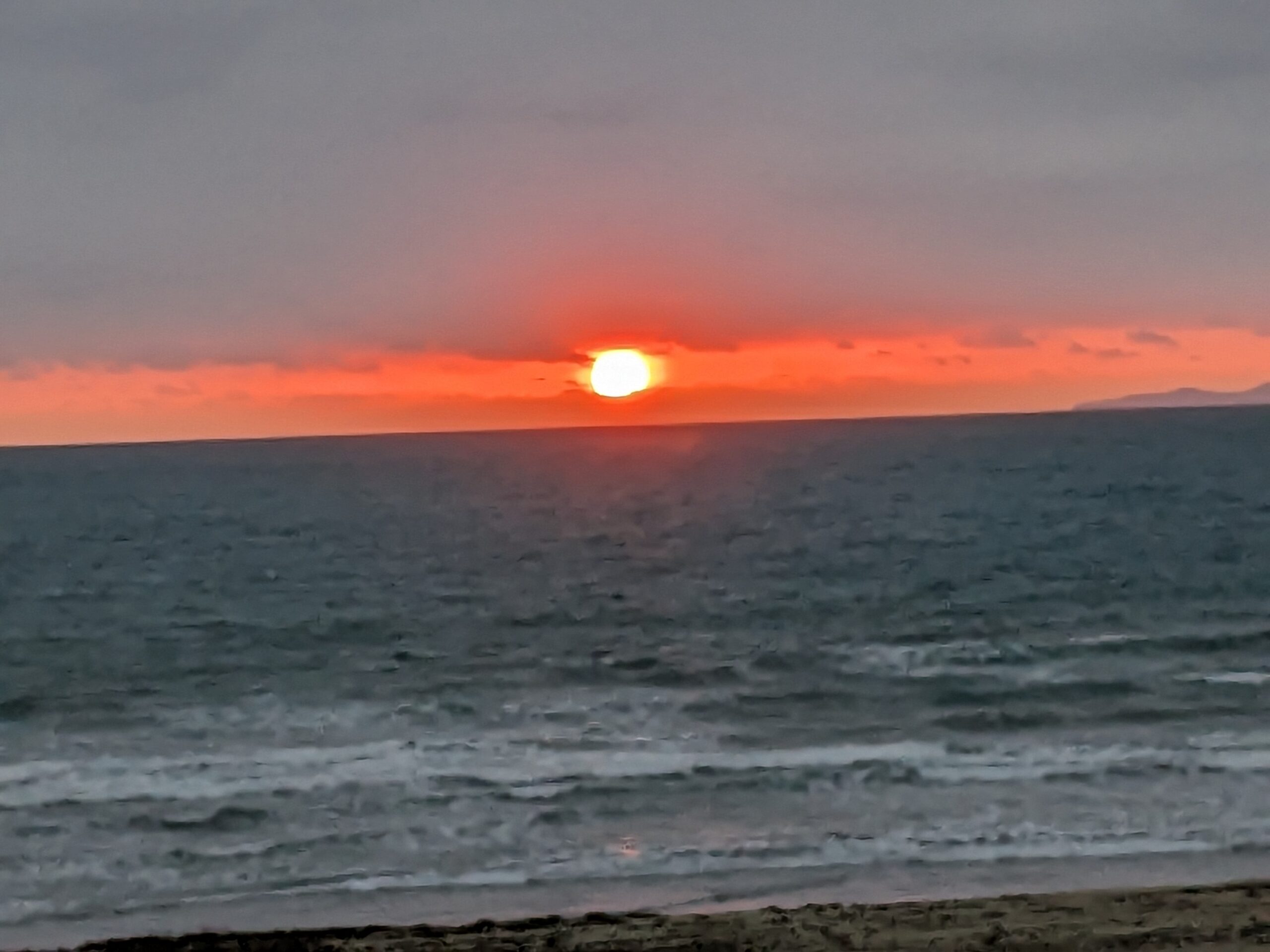
We’re fortunate that the back of this oceanfront property is facing the west. On clear evenings, we can watch the sunset while we lounge at the table and chairs by the pool. We’ve never lost interest in sunsets all these years, especially when we’ve spent time in properties overlooking the ocean.
It’s been cloudy most days. We’ve yet to have a fully sunny day. It may start that way, but in a few hours, the clouds roll in, and with it comes drizzles and often rain. Neither of us cares to use the pool or sit outdoors on cloudy days. However, I am looking forward to being able to do some walking in the pool if the weather changes.
See below:
“The inter-Andean valleys have a temperate climate and rainy season from October to May and a dry season from June to September; average monthly temperatures are about 14.5C (58.1F) in the rainy season and 15C (59F) in the dry season.”
Since we arrived two weeks ago, the temperature has been mainly in the 21C (70F) range to a high of 27C (80F) with very high humidity (often 88%) and dew point (75), basically uncomfortable weather. The pool is not heated, and the water is cold, making it less comfortable than we’d prefer.
With all the walking I am doing, I am okay with waiting until it warms up a bit, which it may not be while we’re still here. If not, I am fine as long as I’m getting exercise by walking.

So here we are with ‘load shedding” in Ecuador. Apparently, due to the lack of rain in the mountains, the reservoirs are low, and the country’s electric company has instituted power outages. They don’t call it load shedding here. Here’s an article about this from this site:
“Power supply disruptions are occurring across Ecuador as of Oct. 30 due to production shortfall. Business disruptions are likely.”
Power supply disruptions are occurring throughout Ecuador as of Oct. 30 due to lower hydroelectric power generation in the midst of ongoing drought conditions in the Amazon region. Authorities have stated that rolling blackouts of up to 4 hours are likely throughout the country until early December. A recent deal to import electricity from Colombia may alleviate the severity of power outages, but energy shortages are likely to persist.
Commercial disruptions are likely for businesses dependent on public electricity. Transport disruptions due to malfunctioning traffic signals are possible during periods of power failure. Temporary commercial and communications outages, including cellular service disruptions, may also occur during blackouts. The outages are unlikely to affect government buildings and businesses relying on private generators. Essential services like ATMs and petrol stations may temporarily cease operations during load-shedding periods.
There is an increased security risk as a result of power outages. Blackouts could adversely affect security protocols, including alarm systems and electronic fences; opportunistic criminal activity could increase during electricity outages.”
Here we go again. We experienced the outages last week but didn’t write about it, assuming it might be a temporary fault causing the disruption. After speaking with residents at Kokomo at dinner last Wednesday, they were all aware of it when they’d been notified by email.
I haven’t found a definitive schedule for this area online, but Carol, whom we met last Wednesday, offered to send me the schedule when she receives it soon. That way, we can plan our day.
That’s it for today, folks.
Be well.
Photo from ten years ago today, November 6, 2013:

